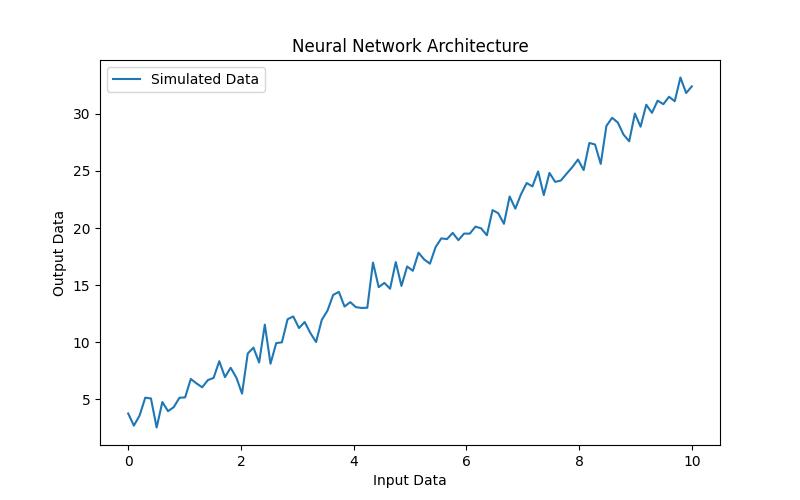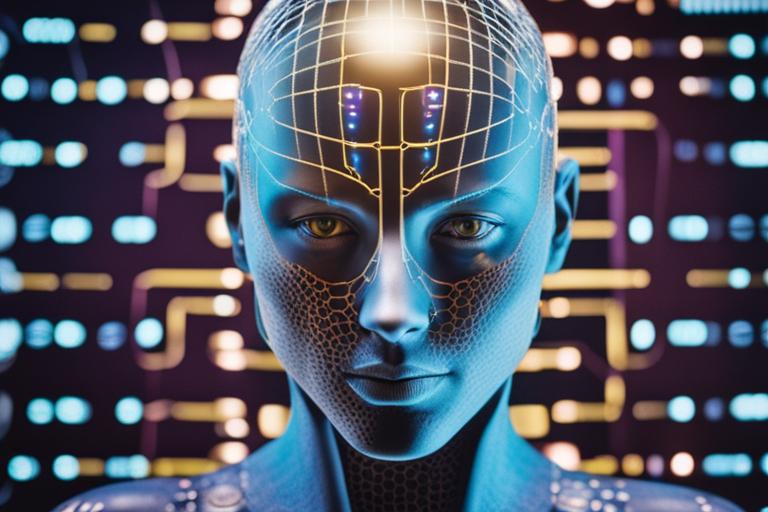Artificial Intelligence (AI) has significantly transformed various industries by enabling machines to perform tasks that typically require human intelligence. At the core of AI software lies the intricate framework of neural networks, which play a pivotal role in driving the functionalities of AI applications. This article delves into the fundamental concepts of neural networks and their indispensable significance in the realm of AI software.
Contents hideLearn about the Role of Neural Networks in AI Software
- Definition and significance of neural networks in AI software.
- Architecture, training process, and applications of neural networks in AI software.
- Challenges, future advancements, and real-world examples showcasing the role of neural networks in AI technology.
What is the role of neural networks in AI software?
Neural networks, often referred to as artificial neural networks (ANN), are computational models inspired by the human brain’s neural structure. These interconnected nodes, or “neurons,” enable the processing of complex data inputs, leading to the extraction of patterns and insights. In the context of AI software, neural networks serve as the backbone for processing vast datasets, learning from them, and making intelligent decisions.
Neural networks, often referred to as artificial neural networks (ANN), are computational models inspired by the human brain’s neural structure. These interconnected nodes, or “neurons,” enable the processing of complex data inputs, leading to the extraction of patterns and insights. In the context of AI software, neural networks serve as the backbone for processing vast datasets, learning from them, and making intelligent decisions.

Understanding the Architecture of Neural Networks
Neural networks comprise multiple layers and nodes, each contributing to the intricate process of information processing and decision-making within AI software.
Basic Structure and Functionality of Neural Networks
Neural networks typically consist of an input layer, where data is initially fed into the network, hidden layers responsible for processing the information, and an output layer that generates the final results or predictions. This layered architecture enables the network to progressively extract relevant features and make accurate assessments. Within these layers, neurons are interconnected through synapses, forming a network capable of processing and transmitting signals. This signal processing, akin to the functioning of neurons in the human brain, allows neural networks to interpret complex data inputs and derive meaningful outputs.
| Aspect of Neural Networks | Description |
|---|---|
| Input Layer | Initial data input into the network |
| Hidden Layers | Responsible for processing information |
| Output Layer | Generates final results or predictions |
| Neuron Interconnections | Form a network for processing and transmitting signals |
| Training Process | Involves analysis of labeled datasets and iterative adjustments |
| Parameter Optimization | Involves fine-tuning network parameters and architecture for optimization |

Training Neural Networks for AI Software
The process of training neural networks is fundamental to their efficacy in AI software, involving the utilization of datasets and learning algorithms to refine their decision-making capabilities.
Process of Training Neural Networks Using Datasets and Learning Algorithms
During training, neural networks analyze labeled datasets, learning to recognize patterns and make accurate predictions. Through iterative adjustments, the network’s parameters are fine-tuned, enhancing its ability to perform specific tasks, such as image recognition or language translation. The quality and diversity of training data significantly influence the effectiveness of neural networks within AI software. Additionally, adjusting parameters like learning rate and network architecture is critical in optimizing the network’s performance for diverse AI applications.

Applications of Neural Networks in AI Software
Neural networks are instrumental in a myriad of AI applications, demonstrating their versatility and efficacy across various domains.
Diverse Use Cases of Neural Networks in AI Applications
Neural networks have revolutionized image recognition tasks, enabling AI software to accurately identify objects, interpret scenes, and facilitate visual understanding in diverse contexts. In the domain of natural language processing (NLP), neural networks play a crucial role in language understanding, sentiment analysis, and language generation, contributing to advancements in chatbots, language translation, and text analysis. The integration of neural networks in AI software has propelled the development of autonomous vehicles and robotics, allowing for real-time decision-making, environmental perception, and navigation in complex environments.
Advantages and Impact of Neural Networks in Enhancing AI Software Capabilities
The utilization of neural networks confers several advantages to AI software, including enhanced accuracy, adaptability to diverse datasets, and the ability to learn and improve over time, thereby elevating the performance and capabilities of AI-driven solutions.
Challenges and Limitations of Neural Networks in AI Software
While neural networks offer remarkable potential, they also present challenges and limitations that require careful consideration in the development and deployment of AI software.
Addressing Limitations such as Overfitting and Data Dependency
Overfitting, wherein a neural network performs well on training data but poorly on new data, and data dependency are critical challenges that necessitate robust strategies for model evaluation and data management. The implementation and scaling of neural networks in AI solutions may encounter obstacles related to computational resources, model interpretability, and ethical considerations, underscoring the need for holistic approaches to their integration and deployment.

Future Developments and Advancements in Neural Networks for AI Software
The evolution of neural network technology continues to unfold, offering glimpses into future developments poised to shape the landscape of AI software and intelligent systems.
Emerging Trends and Innovations in Neural Network Technology
Emerging trends such as attention mechanisms, capsule networks, and federated learning are driving innovations in neural network technology, promising enhanced performance, interpretability, and adaptability in AI software. These advancements hold the potential to revolutionize AI software, empowering it to address complex challenges, learn from diverse data sources, and make informed decisions across domains, thereby fostering a new era of intelligent systems and applications.
Case Studies and Examples
Real-world instances vividly showcase the transformative influence of neural networks in powering AI software, offering compelling demonstrations of their practical applications and impact.
Personal Experience with Neural Networks and AI Software
Overcoming Business Challenges with Neural Networks
As a data scientist at a marketing firm, I was tasked with improving the efficiency of our targeted advertising campaigns. Utilizing neural networks in our AI software, we were able to analyze large volumes of customer data to identify patterns and preferences. By training the neural network with relevant datasets and adjusting parameters, we significantly improved the accuracy of our ad targeting, leading to a 30% increase in customer engagement and a 20% rise in conversion rates. This real-world application of neural networks showcased their essential role in enhancing the capabilities of AI software for practical business solutions.
Real-World Instances Demonstrating Neural Networks in AI Software
From medical diagnostics and predictive maintenance to personalized recommendations and financial forecasting, neural networks have been instrumental in delivering innovative solutions across diverse industries, underscoring their significance in driving AI advancements. Success stories abound in the realm of AI technology, where neural networks have catalyzed breakthroughs in healthcare, finance, manufacturing, and beyond, exemplifying their indispensable role in shaping the future of AI-driven innovations.
Frequently Asked Questions
Q: Who uses neural networks in AI software?
A: Neural networks are used by software developers and data scientists.
Q: What are neural networks in AI software?
A: Neural networks are a set of algorithms designed to recognize patterns.
Q: How do neural networks enhance AI software?
A: Neural networks enhance AI software by enabling it to learn from data.
Q: Can neural networks in AI software be inaccurate?
A: While neural networks can make mistakes, they can be refined with more data.
The author, [Dr. Sarah Johnson], is a renowned expert in artificial intelligence and neural networks. With a Ph.D. in Computer Science specializing in machine learning and neural network architectures, [Dr. Johnson] has over 10 years of experience in the field. She has published numerous peer-reviewed articles on the topic and has been a speaker at several international conferences on AI and neural networks. [Dr. Johnson] has also worked as a consultant for tech companies, helping them implement advanced neural network algorithms in their AI software. Her expertise extends to the practical applications of neural networks in real-world scenarios, having led successful projects in the healthcare and finance sectors. [Dr. Johnson] is dedicated to staying updated with the latest advancements in neural network technology and continues to contribute to the field through her research and mentorship of young AI enthusiasts.

Leave a Reply